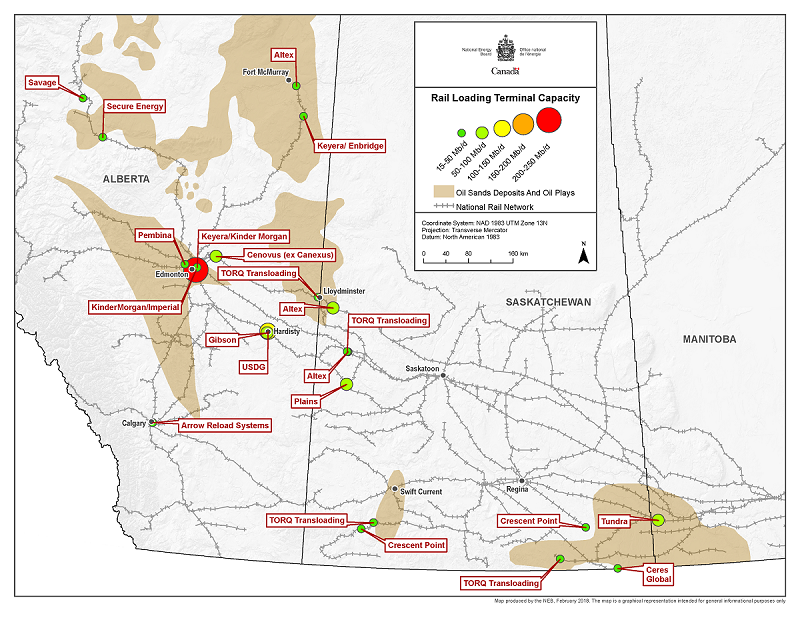Market Snapshot: Major crude oil rail loading terminals in the Western Canadian Sedimentary Basin
Release date: 2018-02-07
The Western Canadian Sedimentary Basin (WCSB) has approximately 1.2 million barrels per day (MMb/d) of crude rail loading capacity.Footnote 1 Crude oil shipped from the WCSB can access refineries across North America through several large rail networks. Facilities known as rail loading terminals load the crude oil into specialized tank cars so it can be moved by train. Approximately 60% of total loading capacity in the WCSB is concentrated in northern and central Alberta, in the Edmonton and Hardisty regions. Both Edmonton and Hardisty are junction points for crude oil infrastructure and have become major hubs for crude oil exports to the United States (U.S.).
Major crude oil rail loading terminals in the WCSB
Source and Description
Source: NEB, CAPP
Description: This map of Alberta, Saskatchewan, and Manitoba shows the location of the 22 major crude by rail oil loading terminals in the WCSB. It shows all terminals with a capacity of more 15 000 barrels per day.
Canada’s Energy Future 2017 contains crude oil production projections. In the Reference Case total Canadian crude oil production is expected to increase by 21% from 2016 to 2020 – from 3.97 MMb/d in 2016 to 4.79 MMb/d in 2020. This increase is due to new and expansion mining facilities: Suncor’s Fort Hills and CNRL’s Horizon Phase 3 as well as new in situ projects and expansions and increased production from existing in situ facilities. Additionally, no major new WCSB pipeline capacity is expected to come online before 2019. These two factors suggest crude by rail may be relied on more in the near future.
Shipping crude by rail is often more expensive than pipelines. However, it can offer a flexible alternative. Pipelines are good at connecting relatively large supply basins to major markets but rail has the ability to send product and reach a variety of different sizes of markets because of its expansive reach. Canada ships numerous types of crude oil by rail to various destinations throughout North America, with much of the supply getting shipped to the U.S. Gulf Coast.
- Date modified:

